|
Fruit ID #2
| Fruit Identification Photos #2 |
Schizocarps of Filaree and Cheeseweed
Geranium Family (Geraniaceae)
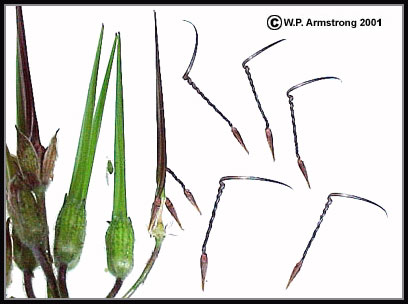
|
Fruits (schizocarps) of filaree (Erodium moschatum), a common and prolific naturalized Mediterranean weed during the spring in southern California. Each fruit is composed of five sections called carpels and a long, slender style column. Since the seed-bearing carpels do not split open, the fruit is considered indehiscent. When they begin to dry out, the mature carpels (each with its own slender style) separate from each other. As the styles uncoil, the carpels are often forcibly ejected. Upon landing on the ground, the free end of the style spirals around like the hand of a clock, twisting the seed-bearing carpel deeper and deeper into the soil. Species of Erodium are also called storksbill because of the long, beaklike style column on the fruits.
|
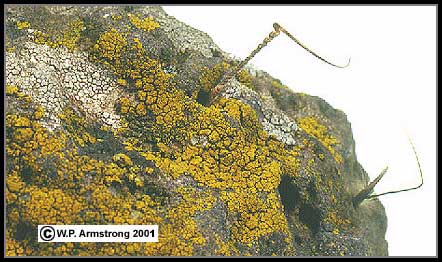
|
Seed-bearing carpels of filaree (Erodium moschatum) twisted into the pores of lichen-covered basalt on the Santa Rosa Plateau of Riverside County, California. The crustose lichen is Candelariella (probably C. vitellina).
|
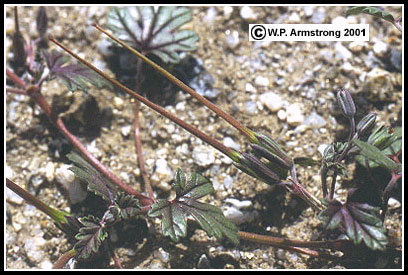
|
A native species of filaree (Erodium texanum) in the Anza-Borrego Desert of San Diego County. Unlike the naturalized weedy species with pinnate or pinnately dissected leaves, this native filaree has broad, palmately-lobed leaves. Like its European cousins, it produces the typical long-beaked fruit (schizocarp) composed of five carpels.
|
Mallow Family (Malvaceae)
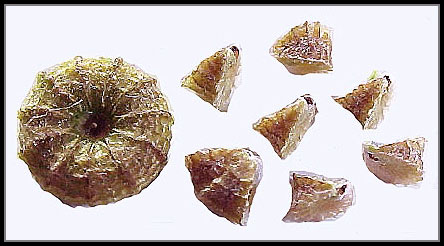
|
The schizocarp fruits of cheeseweed (Malva parviflora), another common and prolific naturalized weed during the spring in southern California. Each wheel-shaped fruit splits into a number of wedge-shaped, indehiscent, one-seeded sections called mericarps. The common name cheeseweed is derived from the shape of the fruit that supposedly resembles a wheel of cheese (with some imagination).
|
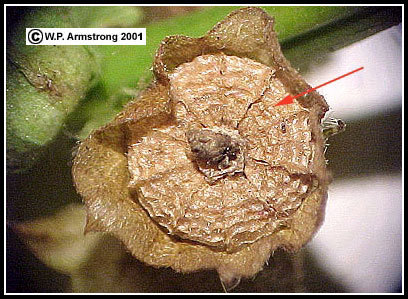
|
Close-up view of the schizocarp fruit of cheeseweed (Malva parviflora). The wheel-shaped fruit splits into ten wedge-shaped, indehiscent, one-seeded sections (carpels). The red arrow points to an individual section (carpel). Since all the carpels came from a single compartmented gynoecium (compound pistil), the gynoecium is refered to as syncarpous. In this case the carpels are attached in a ring to a conical central axis, and separate from each other at maturity when they dry out. An apocarpous gynoecium contains two or more separate and distinct carpels (called follicles), such as the larkspur (Delphinium) and peony (Paeonia). The magnolia gynoecium contains many separate carpels (follicles), each bearing a bright red seed. Gynoecia composed of numerous distinct carpels are considered to be a primitive condition in the phylogeny of flowering plants.
|
|









